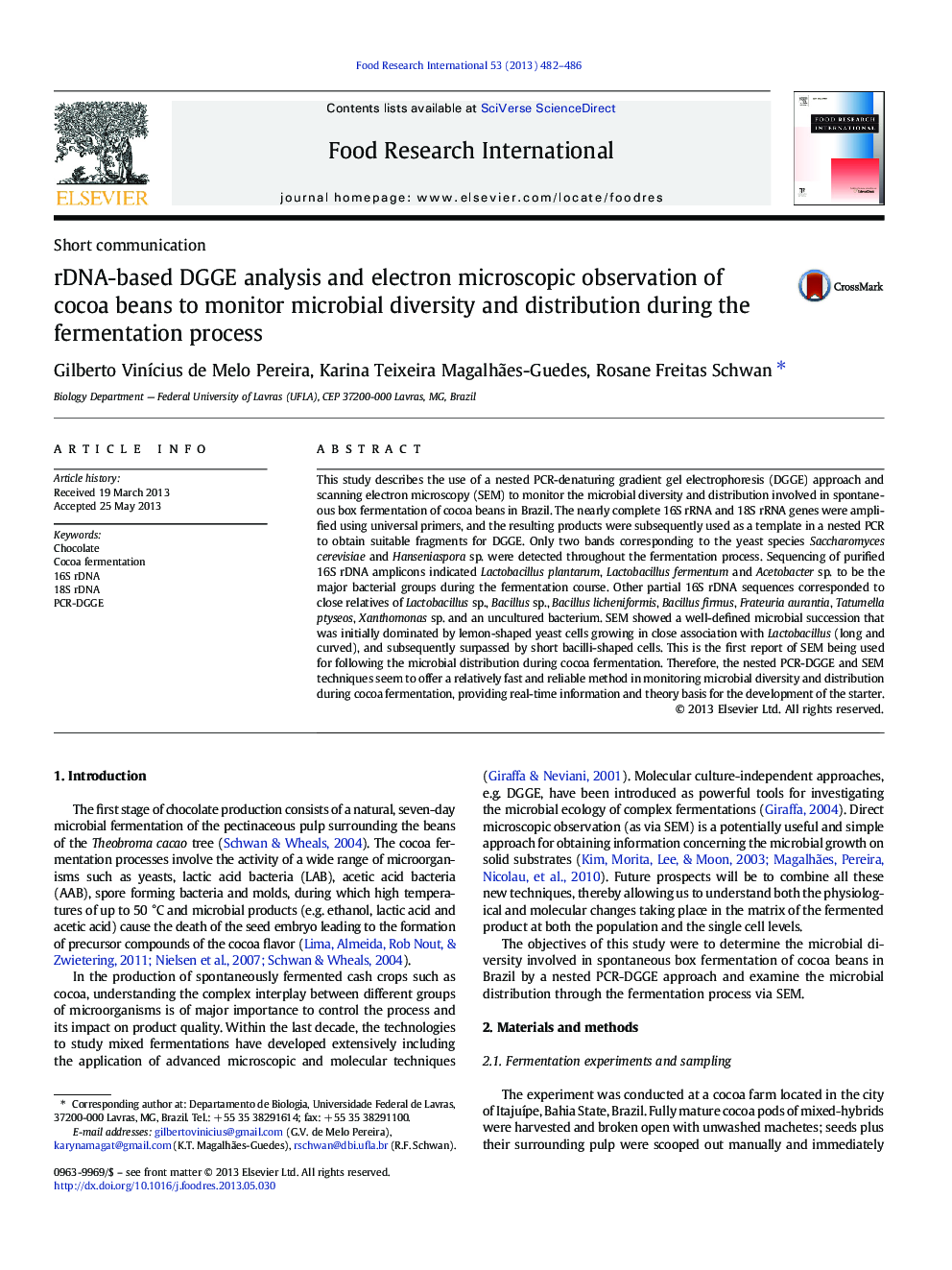| Article ID | Journal | Published Year | Pages | File Type |
|---|---|---|---|---|
| 6397837 | Food Research International | 2013 | 5 Pages |
â¢Cocoa PCR-DGGE analysis.â¢Cocoa beans electron microscopic.â¢Cocoa microbial diversity.
This study describes the use of a nested PCR-denaturing gradient gel electrophoresis (DGGE) approach and scanning electron microscopy (SEM) to monitor the microbial diversity and distribution involved in spontaneous box fermentation of cocoa beans in Brazil. The nearly complete 16S rRNA and 18S rRNA genes were amplified using universal primers, and the resulting products were subsequently used as a template in a nested PCR to obtain suitable fragments for DGGE. Only two bands corresponding to the yeast species Saccharomyces cerevisiae and Hanseniaspora sp. were detected throughout the fermentation process. Sequencing of purified 16S rDNA amplicons indicated Lactobacillus plantarum, Lactobacillus fermentum and Acetobacter sp. to be the major bacterial groups during the fermentation course. Other partial 16S rDNA sequences corresponded to close relatives of Lactobacillus sp., Bacillus sp., Bacillus licheniformis, Bacillus firmus, Frateuria aurantia, Tatumella ptyseos, Xanthomonas sp. and an uncultured bacterium. SEM showed a well-defined microbial succession that was initially dominated by lemon-shaped yeast cells growing in close association with Lactobacillus (long and curved), and subsequently surpassed by short bacilli-shaped cells. This is the first report of SEM being used for following the microbial distribution during cocoa fermentation. Therefore, the nested PCR-DGGE and SEM techniques seem to offer a relatively fast and reliable method in monitoring microbial diversity and distribution during cocoa fermentation, providing real-time information and theory basis for the development of the starter.
